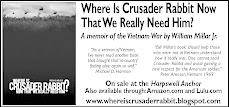In those days a decree went out for children third grade and above, who wished to participate in the annual church pageant, should gather at the church vestry at the appointed afternoon in early December. I do not remember which afternoon, but it was probably a Saturday. Gangs of us showed up, as the prospect of being a shepherd, wise man or angel was as much of a part of getting to Christmas as opening another window of an advent calendar, which, at the time, we did not have.
The annual director was Mrs. Leighton, a woman short in stature, but a giant in spirit and patience. The younger boys were automatically assigned roles as shepherds, the girls as angels. For the latter, the only other option fell to one anointed older girl, that being the part of Mary. For the older boys there was the opportunity to be a wise man or Joseph, but the former was the role to which I aspired because of the cool costumes available.
Along the north wall of the vestry was a bench, which unknown to those of us participating for the first time, opened to reveal a wonderment of costumes made from old curtains and bathrobes, pie tin halos, and interesting things like a brass lamp that appeared to have escaped from Aladdin, a brass incense burner, small jewelry box, two crowns and a fez, probably from antique lodge paraphernalia.
Once a week, we trekked down to the church, each rehearsal a step closer to the great day.
The final product was extremely simple: there were no speaking parts for us. The church, a unique wooden structure from the late 1840’s built in the self-supporting Gothic style, was lined with fir garlands and behind the pulpit a large tree with white decorations. Candles were placed in holders at the end of each pew and lit by the ushers. Then, the Dean of Bowdoin College would climb into the pulpit and the voice of Christmas would resonate throughout the church as he read from the King James bible, with the “lo’s” “Fear not’s,” and “swaddling clothes,” now eliminated from the modern, “relevant” story.
He would begin with the decree from Caesar Augustus, at which point, Mary and Joseph would take places in the front while the congregation sang “Oh Little Town of Bethlehem.” When he came to the shepherds and the visitation of the angels, we would all take our places in the front along with singing of “It Came Upon A Midnight Clear” and “Hark, the Herald Angels Sing.”
During the latter, we shepherds would scurry down the side aisles to the back of the church only to troop back up the center aisle to adore the Baby, with the singing of “Oh Come All Ye Faithful.”
Then it was the turn of the three older boys who played the kings. Each would solemnly pace down the aisle, one to each of the verses. When all the players were in place, the other children in church were invited to bring their gifts down front to place in front of the manger. In my early days, these were still gifts of items like warm socks and small toys which were sent to the recovering countries of Europe. (That’s how old I am.)
The lights would then be dimmed, the church illuminated only by candle light, and we would finish with “Silent Night.” As the last verses fell away, we would put on our coats and head for home, for whatever traditions our families had, darkness would take its deep winter hold, and we would sleep, awaiting the arrival of Santa Claus.
Sunday, December 20, 2009
Subscribe to:
Post Comments (Atom)



No comments:
Post a Comment